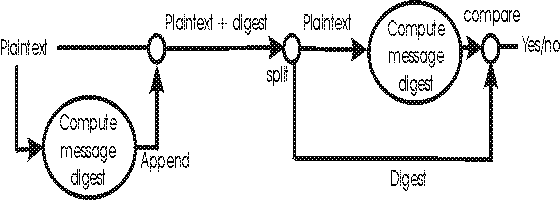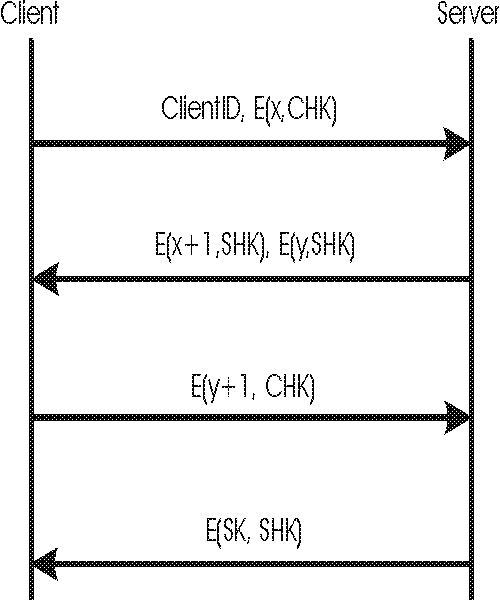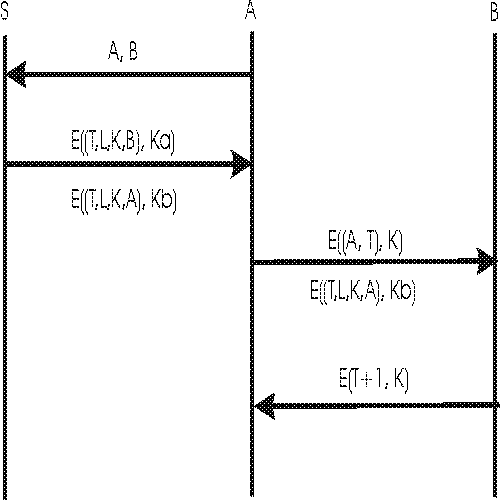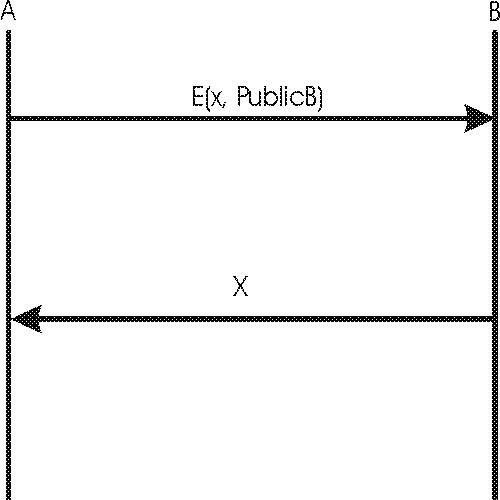
Security & Payments
Computerized identification techniques
Password-based systems
Physical tokens
Location
Digital Signatures
Secret Key Encryption
Sender and Receiver need to share a common secret key

Main problem:
- How participants safely exchange a common secret key
- For N participants, as many as N*N = N^2 keys are required
Common algorithms: DES (Data Encryption Standard), Triple DES, RC5
Currently under development: AES (Advanced Encryption Standard)
Public-key encryption
Sender and Receiver each have a pair
of keys
a public and a private key each.
Public keys are public.
Private keys are kept secret by their owner.
sender encrypts with receiver's public key
receiver decrypts with receiver's private key
Nobody but the receiver can decrypt the message!
sender encrypts with sender's private key
receiver decrypts with sender's public key
Anybody can decrypt the message!
Only the particular sender could have sent the message!
Advantage:
- sender and receiver need not share a secret
key.
- For N participants, only N key pairs are required.
Main problems:
Public-key encryption is 2-3 orders of magnitude slower than secret-key encryption. Hence public-key encryption is used to exchange secret keys. Secret-key encryption
is then used for the data itself.
Authenticity problem: How does a user know that the public key that is thought to belong to Bob actually belongs to Bob? The certificate concept addresses this problem.
Common algorithms:
Rivest-Shamir-Adleman (Refs: 1 2 3 )
Elliptic Curve Cryptosystems (Refs: 1 2 3 4)
ECC keys smaller than RSA (1/6) for similar security
RSA 7x faster for encryption and verification
ECC 6.4x faster for decryption and signing
ECC has high setup cost
Little practical impact of the differences
Cryptographic Strengh
Cryptographic strength cannot be proven, but it may be disproven.
Attacks on symmetric encryption algorithms
Attacks on public key encryption algorithms
Message digest or cryptographic hash or checksum
Objective: To protect message against tampering while in transit.

Property of the message digest:
Given a message and its corresponding message digest, it is computationally infeasible to find another message
with the same message digest value.
Therefore if message is tampered with, comparison will fail.
Common algorithms: MD5, SHA, HMAC
Much faster than DES or RSA.
Services
1. Privacy in communication
2. Authentication: establish identity of participants
3. Message integrity: detect message sent by an imposter that claims to be the other participant.
What Cryptography Can't protect
Authentication protocols
a. Simple three-way handshake
Participants already share a common secret key.
Objectives:
- Client ensures talking to the true server and vice versa
- Client and server exchange another secret key just for this session

x,y: random numbers
SHK = CHK = server/client handshake key (a permanent shared secret key)
SK = session key (secret - for further exchanges in session)
E(x, CHK) = x encrypted with key CHK
SHK/CHK may be a transformed version of a password.
b. Trusted third party
Three parties A, B, and S.
A and B each share secret keys Ka and Kb with S (authentication
server).
A and B know nothing about each other.
Objectives:
- To get A and B to trust each other's identity.
- To generate a secret key K for this session only

A, B: identifiers (names) of participants
T: timestamp (plays role of random number, too)
L: lifetime of session key K
c. Public key authentication
Objective: A wants to ensure that the available public key for B is correct.

Message Integrity protocols
a) Digital signature using RSA
Encrypt message with private key.
b) Keyed MD5
Sender S sends:
message + MD5(message + K) + E (K, privateS)
where K is a random number
Receiver:
- obtains K' by using publicS on E(K,
privateS)
K' should be equal to K if message has not been tampered with.
- computes MD5 (message + K')
- compares result with the MD5 (message + K) sent.
They match only if K = K'.
c) MD5 with RSA signature
Sender sends:
msg = message + MD5(message) + E (MD5(message), privateS)
Receiver:
- decrypts MD5(message) using
publicS on third part of msg.
- compares decrypted MD5(message) with second
part of msg.
d) Public key distribution - informal
Public keys should still be safeguarded. Chains of trust.
A, B exchange public keys while in the same room
A, C exchange public keys at a later time when in the same room
A can sign C's public key and send it to B.
Now B has C's public key.
Chains of trust can be established this way.
Key-signing parties: Lots of A,B,Cs in a room with their laptops.
f) Public Key distribution -- Digital Certificates, Certification Authorities
Purpose:
To match identity of an individual A with his/her public key.
Content:
Assumptions:
e) Exchanging a secret key securely
Diffie-Hellman exchange protocol (Refs: 1 2)
f) Pretty Good Privacy (PGP)
PGP software PGP-based
products
Purpose: Encryption and authentication for e-mail
Over time a user participates in key-signing parties and collects a set of certificates with varying degrees of trust (key ring).
Problem: A wants to send message to B and prove to B that it comes from A
Secure Transactions
(Transport Layer Security)
Protocol stack for secure Internet communications
Secure Sockets Layer(SSL),
Transport Layer Security(TLS), Wireless TLS (Refs: 1 2)
Widely used for internet transactions
Purchasing a book over the Internet:
Sender S, Recipient R
S generates a secret key SK
S sends:
E(message, SK) + E(SK, Public_R) + E( MD(message), Private_S)
Security support in IPv6
Extension headers for including
Security Parameters (encryption/authentication algorithm + key)
Authentication Data
Example of a packet before and after applying encryption & authentication
Before:
|
OrigIPHeader |
TCPHeader |
Data |
After:
|
OrigIPHeader |
ESPHeader |
TCPHeader |
Data |
ESPTrailer |
|
|
|
encrypted |
encrypted |
encrypted |
|
|
authenticated |
authenticated |
authenticated |
authenticated |
ESP: encapsulated security payload
Virtual Private Networks
Tunneling: encapsulate a packet within a packet.
The inside packet can be
of the same protocol or of a different one.
encrypted and authenticated
IPSec (part of IPv6): an open standard for VPNs
Example of tunnel mode
|
NewIPHeader |
ESPHeader |
OrigIPHeader |
TCPHeader |
Data |
ESPTrailer |
|
|
|
encrypted |
encrypted |
encrypted |
encrypted |
|
|
authenticated |
authenticated |
authenticated |
authenticated |
authenticated |
Firewalls: sit between the corporate network and the Internet and control packets
Internet --- Web Server --- Firewall --- Corporate network
Internet --- Firewall ---- Corporate network (incl. Web Server)
Internet ---
External Firewall --- Perimeter network (incl. Web Server) ---
Internal Firewall ---- Corporate Network.
Filter-based Firewalls
Packet filtering based on a set of rules at the TCP/IP level
(port no + IP address)
Proxy-Based Firewalls
Problem: company wants to make some of its server's pages publicly accessible, and restrict others to corporate users at remote sites.
Cannot express this as a filter at the TCP/IP level (policy depends on the URL in each HTTP request)
Solution:
Proxy allows application-specific filtering.
Discussion on Firewalls
Assumptions:
All parties on the corporate network are trusted
Firewall software is bug-free
Firewall is properly configured
Limitations
Slow communications down if very thorough
Misses attacks from insiders, viruses, new sophisticated attacks
Firewalls can be:
General purpose computers (stripped down to the bare essentials)
Special purpose devices (e.g. routers)
Denial-of-Service Attacks
An adversary tries to keep you from accessing information or resources you own.
Flooding of your machine with packets that may:
Protection requires to:
Recent denial of service attacks
Solution must be distributed over the network
References:
CERT Advisory on Denial-of-Service
problems
Links to DDoS reviews and tools
Issues:
- security vs. fraud
- authenticity
- transaction cost (infrastructure, time needed and direct costs, cost of fraud)
- privacy, anonymity of user, traceability of payments
- acceptability, universality
- person-to-person transferability
- divisibility (granularity of payments)
- online verification of authenticity versus off line (cheaper)
- sharing risk among, user, bank, merchant
- taxation, money laundering, control over national monetary systems
(from J-C. Birget: Notes on Computer Security, Cryptography and Electronic Payments, Faculty of Computer Science, Dalhousie University, 1999).
Stored-account payment systems
Idea:
- credit-card transactions
- confidentiality of credit card number
- each transaction involves the bank and/or the e-payment organization
Parties:
Consumer PC
Merchant Server
Bank Payment Server
Merchant's Bank
Cardholder's Bank
Protocol
Steps 1-4 over the Internet
Steps 5-6 over dedicated private networks
Secure Electronic Transaction (SET)
For credit card transactions
Industry-backed standard
Digital certificates for customer and merchant authentication
Dual Signature on the SET single purchase request
| Customer message to merchant (encrypted with merchant's public key) | Customer message to bank (encrypted with bank's public key) |
| M1: Message digest | M2: Message digest |
| Dual customer signature M3, where | M3 = Digest (M1 + M2) |
Stored-value payment systems
Counter-based:
Cryptographic coins:
Example:
Smart Cards
Hardware:
Contents:
For additional security requires a PIN.
Examples:
References
Overview
of Cryptography
Firewall howto
JNDI
The
java security model